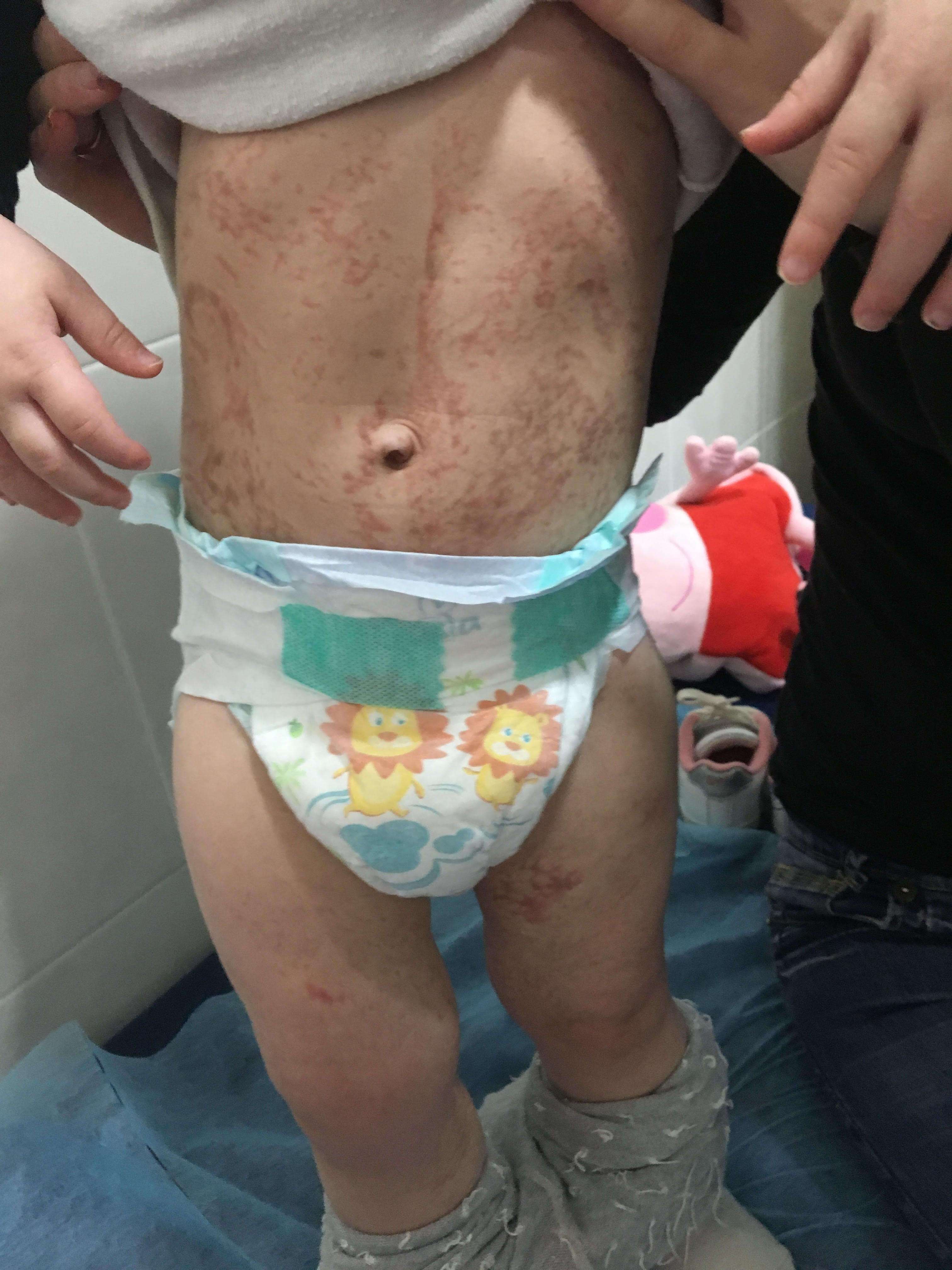
Bloch Sulzberger Syndrome Case
2Allergology department, Іvanо-Frankіvsk Regional Children Hospital, Ukraine
Background: Bloch Sulzberger Syndrome (incontinentia pigmenti) is hereditary X-linked disease with skin lesion and generalized ectodermal and mesodermal dysplasia.
The disease affects 1:91,000 children. It is caused by NEMO/IKK-gamma gene mutation, which is located on chromosome Xq28, however, the implication of mutation in Xp11 and Xq21 segments is not excluded in case with other phenotypes of that syndrome.
In the clinical course of the disease, 4 stages can be singled out: bullous or vesicular, hypertrophic, pigmental and atrophic.
Extracutaneous changes are found in 50% of patients. The most common are: dental anomaly (dentin deficiency or absence of a teeth row); visual organs disorders (cataract, vascular anomalies and profound changes of retina epithelium); CNS injury (spastic paralysis, convulsive disorder, mental retardation). Congenital heart disease, anomalies of skull, anomalies of kidneys, nail dystrophy, etc. occur less frequently.
Case Report: Eight-month-old girl was admitted in allergology department with numerous erythematic-pigmental and papular-bullous linear rash forming along Blaschko lines. Some bullous elements were covered with hard crust (photo 1). Clinical blood and urine analysis, biochemical blood test and immunogram showed no abnormality. Neurosonography, ultrasonic diagnosis and echocardiography did not find any pathology. The patient was initially diagnosed with multiforme bullous erythema. Differential diagnosis was made with herpes zoster, bullous impetigo, bullous mastocytosis. According to anamnesis, the first symptoms occurred in the maternity department, where the child was diagnosed and treated for herpes. Genetic confirmation is not available in Ukraine. However, classic clinical criteria confirm the diagnosis.
Today, the girl is 3 years old. CNS injury and visual organs disorders were not discovered. Bullous rash occasionally recur associated with respiratory condition. Pigmentation areas are present on skin along Blaschko lines (photo 2,3), as well as atrophic skin changes. There are areas of cicatrix alopecia on the skin of the head.
Conclusion: Although Bloch Sulzberger Syndrome is a rare disease, classic symptomatology is indicative of the right diagnosis. These children require case follow-up for early detection of optic nerve disorder and CNS injury.



Powered by Eventact EMS